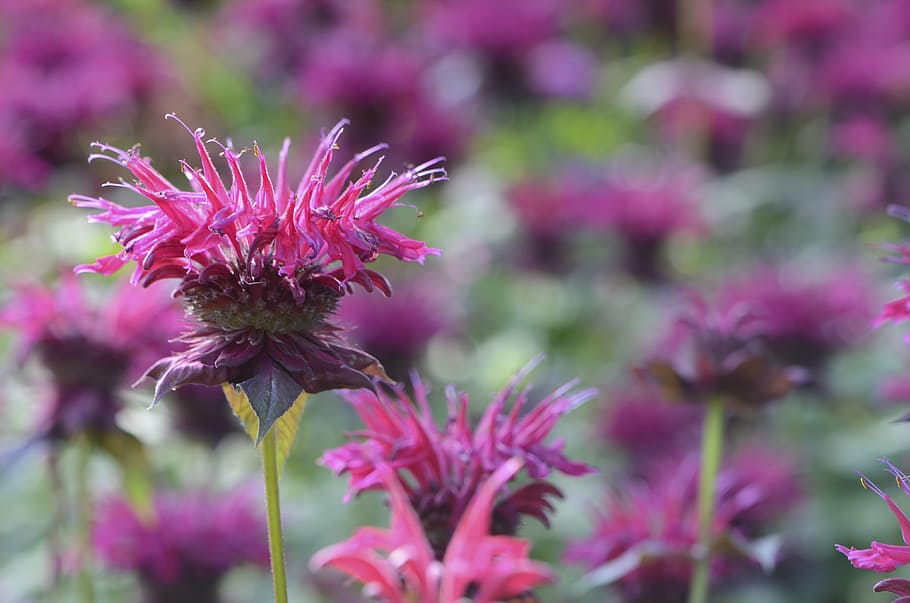Blog

#bioPGH Blog: Wild Bergamot
 A resource of Biophilia: Pittsburgh, #bioPGH is a weekly blog and social media series that aims to encourage both children and adults to reconnect with nature and enjoy what each of our distinctive seasons has to offer.
A resource of Biophilia: Pittsburgh, #bioPGH is a weekly blog and social media series that aims to encourage both children and adults to reconnect with nature and enjoy what each of our distinctive seasons has to offer.
We’re still a bit new to home ownership, but this summer my husband and I have had a chance to start building up our garden — and we wanted be sure we were including native plants! One of the newer species we have added is a cultivar of wild bergamot, also called beebalm. Showy, attractive to pollinators, and a native perennial, we’re excited to support plant and wildlife with this addition — let’s learn more about it!
There are actually two species of beebalm native to eastern North America, plus there are hybrid cultivars of the two if you’re in the market for adding some to your garden. Monarda didyma (to avoid confusion, we will call it scarlet beebalm since their common names overlap) and Mondarda fistulosa (we will refer to this one as bergamot) are related plants that have complementary qualities. Scarlet beebalm, as you probably guessed, is a deeper red color and tends to grow best in rich, moisture-laden soils. Bergamot is a pale lavender or pink and it is more tolerant of dry conditions. The original native plants can grow up to 3.5 feet tall, but cultivars of them currently range from only 12 – 48 inches tall.
Both species of beebalm are native to Pennsylvania and share similar characteristics, but their wild forms are adapted to different habitat types. Both are deer- and rabbit-resistant (hear that, Pennsylvania gardeners!), and both attract a variety of pollinators, from bees to butterflies to hummingbirds. Scarlet beebalm is more tolerant of wet soils and clays while wild bergamot is more tolerant of dry and even rocky soils. Both will start blooming in late June and early July, but bergamot can bloom into September while scarlet beebalm tends to stop blooming a littler earlier in August.
Since bergamot is tolerant of drier, rockier soils, this species and its cultivars are particularly well-suited to rooftop gardens – including the ones here at Phipps! The next time you visit, the roof of the Center for Sustainable landscapes hosts a variety of native plants including coneflowers, dense blazing star, milkweeds, and bergamot! Considering such rooftop gardens can help lower the temperature of the buildings, reduce the urban heat island effect, and assist wild pollinators — all while looking lovely — it is always helpful to keep note of what species can flourish in the built environment.
If you don’t already have this pollinator-attracter in your yard or container garden, perhaps add it to the list to consider for next year! Or there are a number of parks in Western Pennsylvania where you can observe it as you’re enjoying your next outdoor adventure. Have fun exploring!

Credit: Pxfuel, public domain
Connecting to the Outdoors Tip: According to iNaturalist observations, some the best places to find wild bergamot in our area are in state parks. Raccoon Creek State Park has bergamot both in the wildflower preserve and the other sections of the park; patches of it are present in Moraine and McConnell’s Mills; and a number of community and county parks are also home to patches of it.
Resources
US Forest Service Plant of the Week – Scarlet Beebalm
Lady Bird Johnson Wildflower Center – Monarda didyma
Lady Bird Johnson Wildflower Center – Monarda fistulosa
Photo credits: Cover, Maria Wheeler-Dubas; header, Pexels, public domain

